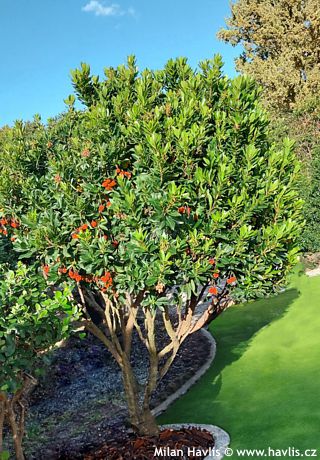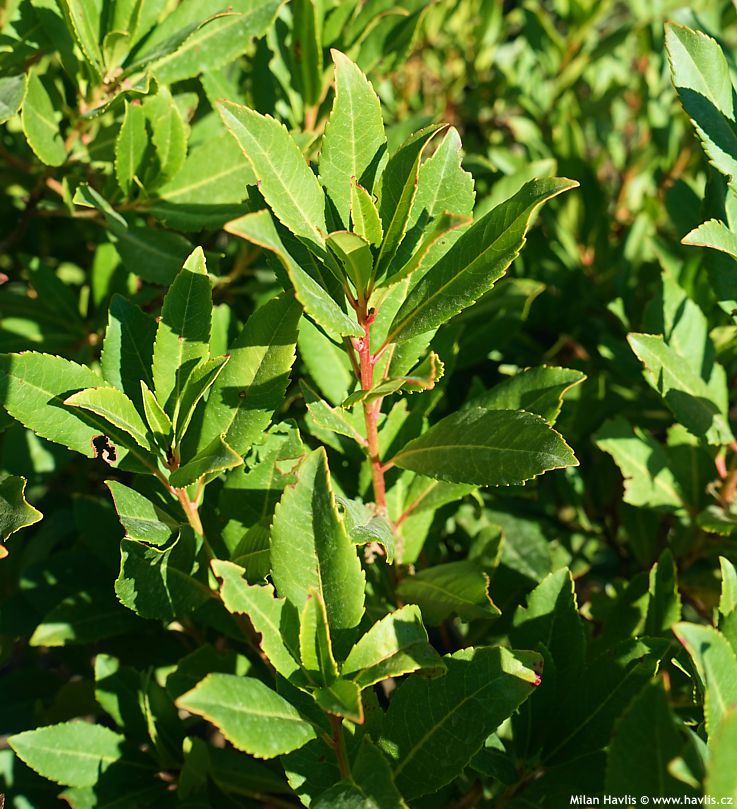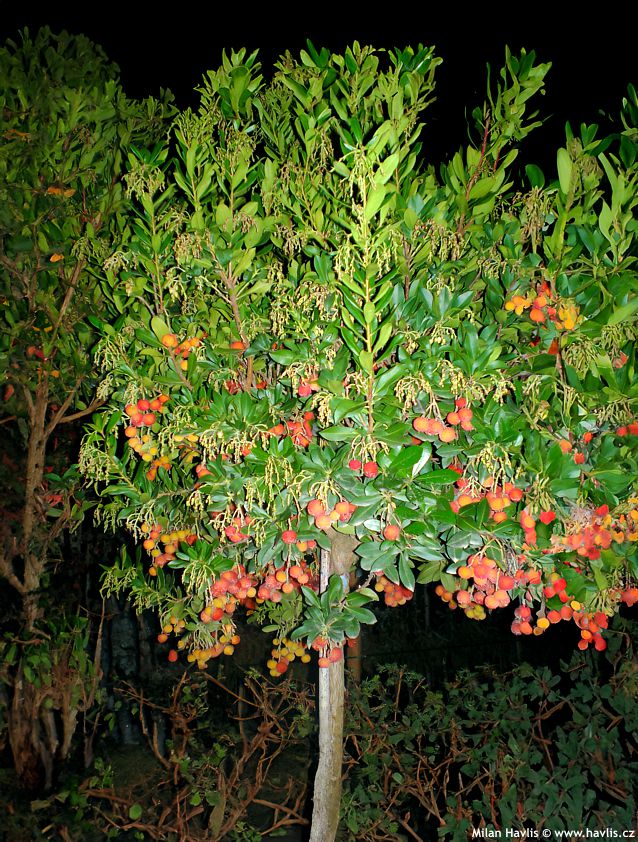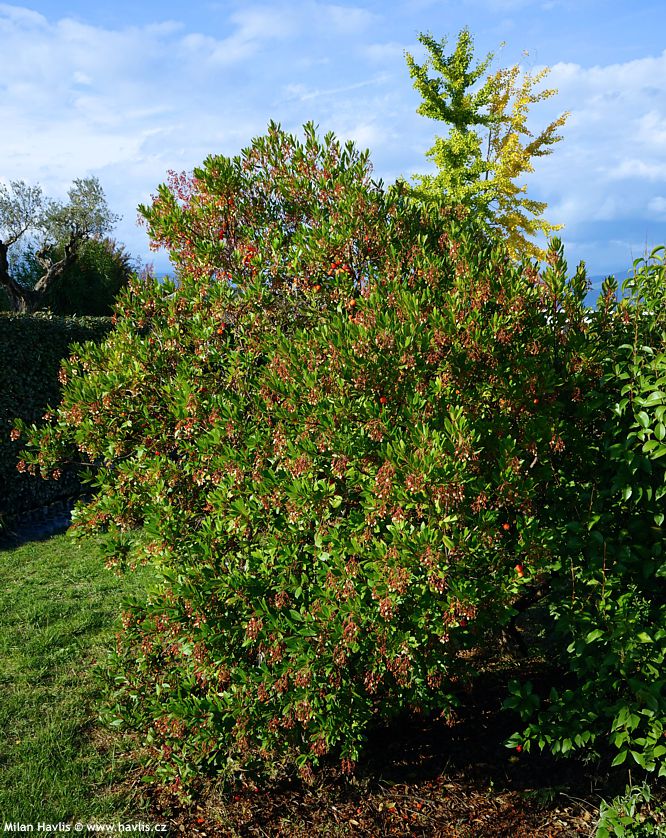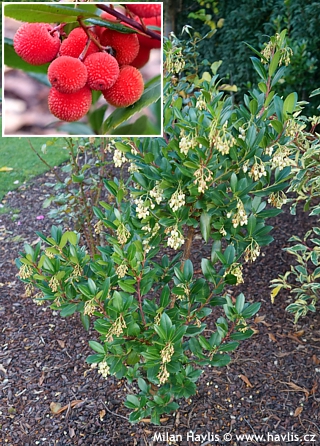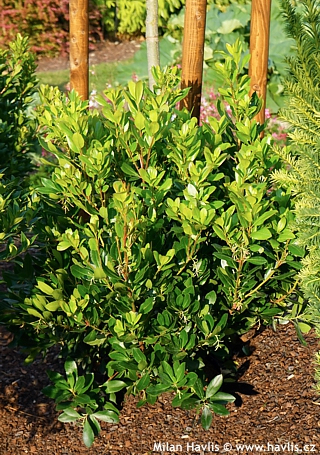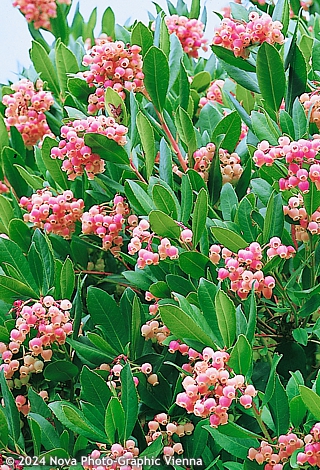Arbutus unedo strawberry tree


The species of strawberry tree was first described by Carl Linné in 1753. It makes evergreen, narrowly oval to obovate, 6-10 cm long, leathery leaves with serrated margins, more conspicuous closer to the tip. They are medium to dark green and glossy. The twigs are orange, reddish when young, and as the bark ages it becomes shredding and changes to a pastel mahogany color, peeling off in small flakes.
Arbutus belongs to heather family (Ericaceae) which is easy to tell looking at its flowers. They are urn-shaped, creamy white, composed in pendent racemes, and show up from autumn until late spring, and sporadically throughout summer, too. Meanwhile mature small, spherical, and edible fruit which is bright red when mature hence the name strawberry tree. It contains as much as 20% of sugars but the taste is rather dull so it is mostly used in preserves and liquors.
Strawberry tree grows moderately into an upright and slightly spreading shrub with a domed canopy. I saw beautiful specimen plants trained into small multistemmed trees which reveal their attractive bark. To do so, select 3-5 main branches as a strong framework, remove all laterals until the top and clip its canopy into a mushroom head every summer. Thus, you can achieve a beautiful Mediterranean-style jewel. In its natural habitat it can grow 8 m tall or even more, however, in C.E. climate it makes about half of that.
Grow it in extremely well-drained, humus rich soil in full sun or only light shade. Slightly acidic soil enhances the depth of green colour in leaves but is not essential. Just avoid compacted or water-logged ground where the roots may rot. It will need even moisture after transplanting but once established stay away from watering. We have not been able to observe its hardiness under all possible conditions but so far it has withstood -17 °C here which makes it suitable for at least USDA 7 without any protection. However, North American growers plant it up north to zone 6 claiming it can withstand -23°C without damage. Choose older plants for growing in zone 6 and provide good mulch for winter. It is disease free and as far as pests vine weevil attacks it rarely.
Last update 22-02-2024
Goods are shipped all over Europe. For Russia and U.K. and for further details please read about SHIPPING OPTIONS HERE.
Are you interested in a serious discount for orders NOV-FEB? Check your options here.
THE PRICES INCLUDE VAT of 15%. For quick conversion you can use 1 CZK = approx. 0.04 EUR
- STANDARD QUALITY - Plants of this group are 1st class quality with number of branches and overall density adequate to their size and age, considering they were container grown.
- DE LUXE QUALITY - This label guarantees a luxurious quality of manually selected plants that, compared to their height and age, are exceptionally dense and beautiful.
- EXTRA - These plants are usually mature and bigger specimens with exceptional overall appearance.
- STANDARD (as described in the plant form) means a tree with a trunk of 190-210 cm and a crown at the top, unless specified differently. The commercial size for trees is their girth measured in the height of 1m from ground.
- HOBBY - These plants are of the same quality as our standard-quality plants but younger and therefore cheaper.
- SHRUB - a woody plant with branches growing bushy from the ground level.
- HALF-STANDARD or MINI-STANDARD - a small tree with shorter trunk, its size is usually specified.
- FEATHERED - These are trees with branches growing already from the base of the trunk and up along the stem.
- GRASSES and PERENNIALS - Sizes given usually read the diameter of the pot or the clump, as specified.












